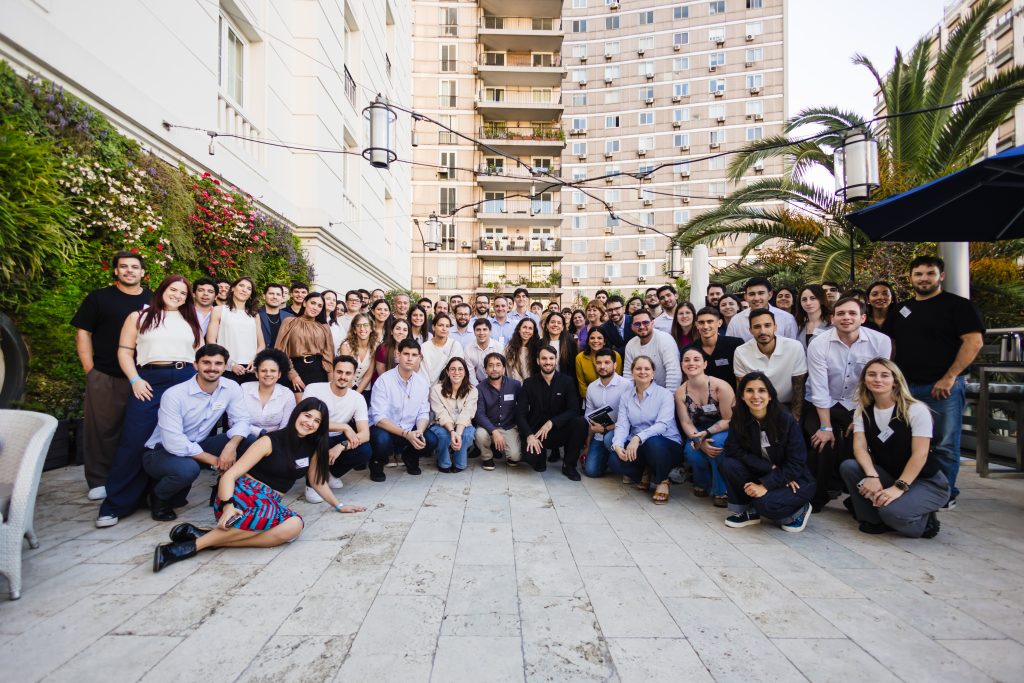How Data Science Is Rewriting Attribution in Fintech and Digital Banking
The financial sector is living a paradox: there has never been more data available, yet most marketing fintech decisions are still made with partial or misinterpreted information.
While performance marketing investment grows year after year, many fintechs, wallets, and digital banks continue operating with attribution models that no longer reflect today’s user reality: omnichannel, nonlinear, constantly changing.
And the issue isn’t just technical: it’s strategic.
It leads to slower, less effective, and ultimately less profitable decisions.

The problem isn’t the lack of data. It’s the lack of understanding.
In our “Fintech & Banking Buenos Aires” workshop, we brought together leaders from marketing, data, and product to address a topic as complex as it is urgent: how to move from isolated data to real decision-making.
With the participation of Juan Martín Pampliega (CEO of Mutt Data), Camilo Jaureguiberry (Data Science Manager at MODO), and Victoria Schiappacasse (Marketing Science Sr. Manager at Mercado Libre), the panel dismantled the myth that measuring well simply means having dashboards and automated reports.
The truth is more uncomfortable: many brands believe they have control over their performance, but in reality they are only reporting — not learning.
Without robust attribution models, experimental validation, and connected activation systems, what is measured today reflects only a fraction of the real impact.
The Great Lie of Modern Marketing: We Think We Measure Well
Marketing, data, and product teams in advanced financial institutions work with powerful tools — but often misaligned. Google, Meta, CRM, and analytics platforms operate in silos. Without an integrated measurement strategy, decisions rely on partial results that don’t capture the full impact of the customer journey.
Models such as last-click or linear attribution rules offer an incomplete view. They don’t reflect the complexity of omnichannel behavior or the incremental impact of marketing actions. And most critically: they don’t enable learning, anticipation, or precise scaling — ultimately limiting the real impact of marketing fintech attribution.

Science-Based Marketing, Not Gut Feeling
Scientific marketing is here to drive creativity further.
From predictive models that identify business opportunities to automated activation systems based on real behaviors, the goal is to move from intuition to continuous learning.
Data science isn’t magic. It’s a tool to validate hypotheses, reduce decision-making friction, and maximize the return of every action.
As mentioned in the event: measuring fast is not the same as measuring well. Without robust models, dashboards tell only part of the story.
One of the key ideas that emerged from the panel was scientific marketing: a way of operating where decisions rely on evidence, experimentation, and continuous learning.
“Dashboards show you the past. Models let you design the future.”
Three Layers for a New Way of Doing Marketing
The focus can no longer be only on analyzing metrics after the fact. The key lies in building systems that learn in real time, identify patterns, and act automatically.
This requires three layers:
-
Machine Learning, to model behavior and anticipate outcomes
-
Analytics, to understand what works, for whom, and why
-
Smart engagement, to activate personalized journeys based on real data
This new stack (ML + Analytics + Activation) does not replace human teams. It enhances them. And it redefines the role of marketing: less tactical execution, more evidence-based strategy.

Build, Buy, or Collaborate?
One of the most strategic decisions for leaders in the sector is how to develop data science capabilities applied to marketing. Should teams build internally, seek external solutions, or adopt hybrid models?
The answer depends on business core, team maturity, and required speed. However, one thing is clear: outsourcing must not mean a black box.
In fact, strategic partners provide not only solutions, but also installed capabilities and transferable learning for the internal team.
External help shouldn’t only build — it should expand a team’s capabilities when designed correctly.
At the same time, building makes sense when the problem is strategic, when first-party data is available, or when the model must integrate with other areas of the company.
External models are useful when the problem is already standardized. And it doesn’t have to be black or white — hybrid solutions exist.
Real Cases: From Concept to Practice
During the panel, concrete cases were shared to show how to move from theory to real implementation.
MODO, for example, developed:
-
A benefits attribution model to understand which promotions generate real impact, in what context, and for which cohorts
-
A machine-learning benefits ranker that prioritizes the most relevant promotions for each user
-
A SearchAI system to improve discovery and reduce friction between user and action
These implementations didn’t only optimize results — they transformed the customer experience and the team’s ability to scale learning.
The Future of Marketing in Fintech: Automatic, Precise, Connected
The end goal is clear: marketing that not only analyzes but also learns and acts.
Systems that personalize, automate, and scale without manual intervention — and with full traceability. Where investment is optimized in real time and user experience adapts to behavior, needs, and context.
Machine Learning + Analytics + Engagement are no longer buzzwords — they are the new growth equation.
Organizations that integrate these components will anticipate customer behavior, maximize LTV, and build long-term relationships.
The marketing of the future isn’t about reporting — it’s about systems that learn, experiment, and act.
Why Does All This Matter?
Because measuring poorly doesn’t only cost money.
>It costs opportunities. It costs speed. It costs learning.
And because leaders who understand this now will gain exponential advantage — not by having more technology, but by having better questions, better systems, and better decisions.